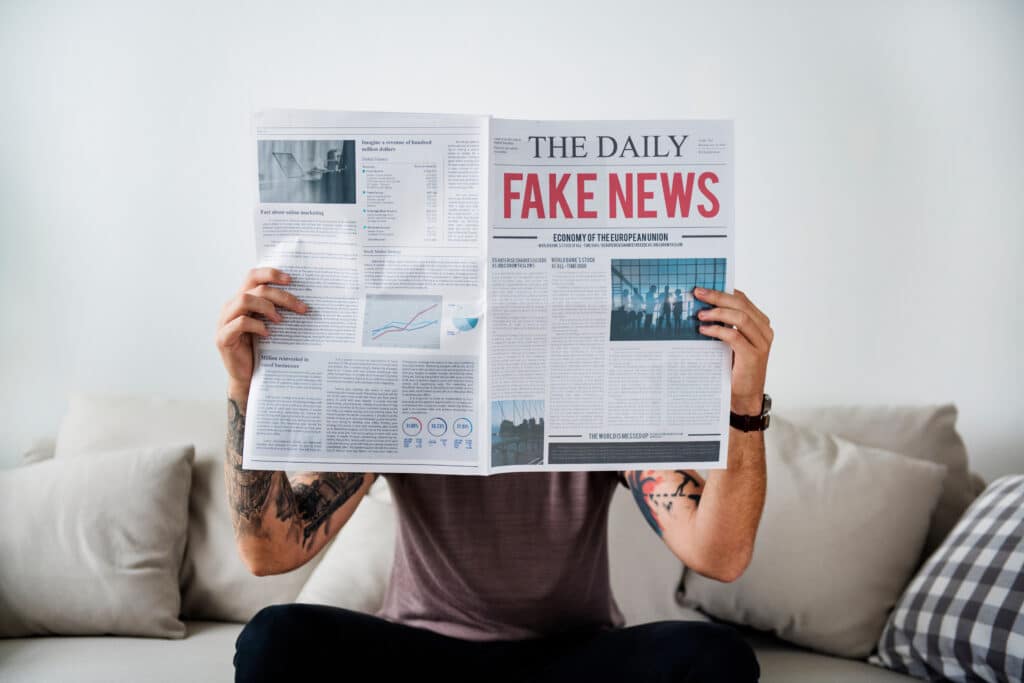Social media is becoming an increasingly popular channel for users to consume news due to how quickly accessible and varied the sources can be – much more so than watching the news on TV for instance. However, as artificial intelligence gains momentum, we may encounter fake, misleading, or even deliberately false news aimed at influencing society and spreading certain opinions.
The Impact of Misinformation in Everyday Life
According to the Cambridge Dictionary, fake news refers to “false stories that appear to be news, spread on the internet or using other media, usually created to influence political views.”
According to Statista, more than 70% of people living in Europe regularly encounter false information.
The spread of fake news reduces public trust in the media overall and has become a global issue. For example, in a significant number of European countries such as France, Spain, and Italy, trust in the media sits at only around 50%. People are seemingly finding it more difficult to decipher the truth and believe governments can control their news networks to pursue a certain line of messaging and avoid covering some stories.
This also poses a considerable problem because it can unfairly influence consumer decisions, leading them to make incorrect choices. Additionally, it shapes a misleading public perception of issues that are often of national significance.
Donald Trump’s Post Featuring Taylor Swift Sparked Controversy
In the United States, the presidential elections are soon approaching, so there is a lot of media coverage and discussion on this topic. One of the most recent events involves a candidate in the upcoming presidential race, Donald Trump, and the globally famous singer Taylor Swift.
Donald Trump posted on the social network Truth Social, where one of the photos shows Taylor Swift allegedly supporting his political campaign. The singer’s support would be valuable in the elections, as it could attract more voters, given that more than half of the adults living in the United States consider themselves fans of Taylor Swift.

Image credit: Photo posted by Donald Trump on Truth Social
This post sparked significant debate because the singer has not publicly acknowledged any support for a presidential candidate. Moreover, she has previously criticized Donald Trump. This raises suspicion that the post may have been created using AI.
Given that this message is used in a political context and may mislead the public, it could also lead to legal consequences. Another critical issue is that such situations may become more frequent, highlighting the need for proper legal regulation.
How to Recognize When News Is Fake?
To distinguish whether a text was generated by AI, consider the following aspects:
- Sentences that are difficult to understand and rapidly changing topics.
- Lack of any context.
- Incorrect or omitted citations.
Regarding visual content, the following characteristics should be noted:
- Mismatches in small details, such as the fingers on hands.
- Distortions in the overall image.
- In video recordings, characters’ movements may be noticeably slowed down.
- Audio that does not match the visuals, i.e., pay attention to lip movements, which often do not correspond to the actual sound when using AI.

Example of fake photo. Image credit: NY Post
Our final thoughts on AI and misinformation
While artificial intelligence can be beneficial in various fields and for certain tasks, it also brings new threats and challenges. Over time, solutions will need to be found to help distinguish real news from false information created with the help of AI.
Sources: Cambridge Dictionary, Statista, TechCrunch, Truth Social, Capitol Technology University

